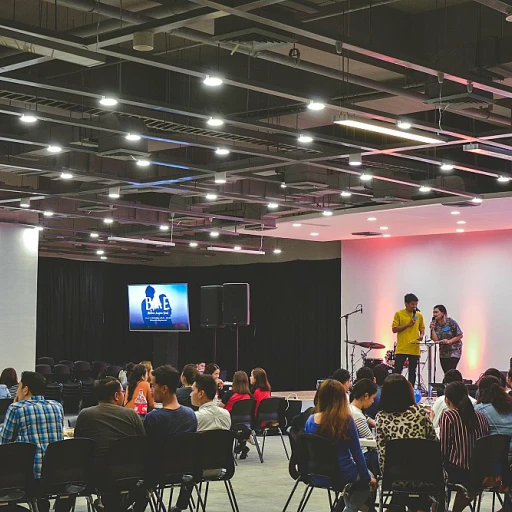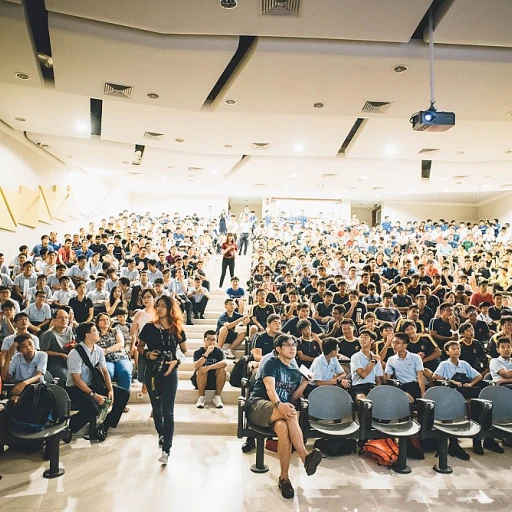
Understanding the Fundamentals of Staffing Training
Mastering the Core Concepts of Staffing Training
Understanding the basic principles of staffing training is pivotal for anyone involved in the recruitment process. With the constant evolution of the staffing industry, training programs must adapt to address changing recruitment requirements and incorporate best practices. Effective staffing training seeks to enhance the skills of employees and management alike. It equips them with the necessary tools to navigate the intricacies of hiring, thereby optimizing the recruitment process. Emphasis on practical learning ensures that trainees can apply their newfound knowledge in real-world scenarios, ultimately improving the quality of hires. The fundamental components of staffing training involve a detailed exploration of:- Recruitment Fundamentals: Understanding the basic requirements and skills necessary to identify and attract top talent.
- Sales Techniques: Learning effective sales strategies to market your recruitment services and secure the best candidates.
- Management Skills: Developing management techniques crucial for onboarding recruits effectively and maintaining their engagement.
- Employee Training: Cultivating an environment that supports continuous learning, where staff training is prioritized to enhance productivity.
Identifying Key Challenges in Candidate Sourcing
Unveiling Challenges in Modern Candidate Sourcing
In today's rapidly evolving staffing industry, candidate sourcing is becoming increasingly complex. The necessity to adapt to changing recruitment dynamics while meeting varied job requirements is pushing recruiters to refine their sourcing prowess constantly. Here are some of the challenges faced in candidate sourcing:
- High Competition for Top Talent: The recruitment landscape is rife with competition, especially for skilled employees in high-demand sectors such as technology, healthcare, and finance. This creates pressure on recruiters to quickly identify and engage with qualified candidates to stay ahead in the hiring process.
- Efficient Use of Time: The time it takes to find, engage, and hire suitable candidates can be extensive. Recruitment teams often struggle with time management, which can impact their ability to fill positions swiftly and effectively.
- Integration of Technology: While technology can significantly enhance candidate sourcing efforts, navigating a myriad of recruitment tools and platforms can be overwhelming for many. It requires proper training for the staff to fully utilize such systems that impact their productivity and outcomes.
- Alignment with Organizational Goals: Ensuring that recruitment aligns with broader company objectives and long-term strategies is essential. This includes identifying candidates whose skills and potential meet the organization's evolving needs.
The success of overcoming these challenges often relies on robust training programs and a well-structured staffing training framework that instills the best practices of recruiting, human resources, and management skills in staff training initiatives.
Developing a Comprehensive Staffing Training Program
Crafting an Effective Training Strategy for Your Staffing Needs
To effectively address the requirements of the staffing industry, a comprehensive training program needs to be crafted, ensuring staff are equipped with essential skills for the recruitment process. This course development should consider both immediate job placement needs and long-term growth in recruiting capabilities.- Identify Key Skill Requirements: Begin by analyzing the specific needs of your organization. Consider the industry trends and the sales strategies crucial in recruitment and staffing. Training employees on these line items is pivotal for a successful staffing program.
- Customizing Training Programs: Customize your training programs to cater to various levels within your organization, from entry-level recruiting staff to senior management positions. This includes designing courses that suit the specific learning needs of different employee roles, especially for those looking to source top talent efficiently.
- Incorporating Management Training: It's crucial for management staff to undergo leadership and management system training. Courses should focus on strategic planning, quality control, and human resource management. Practical scenarios can be part of the learning process, ensuring managers are well-prepared for real-world challenges in the hiring landscape.
- Leveraging Instructor-Led and Group Training: Offer both instructor-led sessions and group training modules. This hybrid approach helps in covering broader management topics and specific recruitment tactics using a comprehensive learning management system.
- Quality Control and Assessment Metrics: Establish a framework for quality control within your staffing training programs. Implement metrics to assess the effectiveness of the training and ensure continual improvement. Evaluating both the program and employee performance over time aligns with best practices in the staffing training domain.
Utilizing Technology in Staffing Training
Leveraging Technological Solutions in Training Programs
In today’s fast-paced recruitment industry, staffing training has become increasingly reliant on technology to enhance learning experiences and outcomes. With the rise of advanced recruitment management systems, integrating technology into the learning and development process is no longer optional but a requirement for staying competitive. Utilizing a learning management system (LMS) allows companies to streamline employee training efficiently. These systems enable staff to access courses and training programs at their own pace, accommodating both instructor-led sessions and individual learning paths. This flexibility ensures that employees can acquire necessary skills and knowledge when their schedules allow, minimizing downtime. Furthermore, incorporating technology into staffing training does more than just provide convenience. It also allows for the implementation of sophisticated metrics to track training effectiveness and employee progress. Technologies like virtual simulations and AI-driven analytics give insights into how well staff are absorbing material and applying it to real-world recruiting challenges. Group training sessions facilitated by video conferencing platforms are another technological advancement supporting staffing training. These solutions enable broad, interactive learning experiences without the logistical constraints of physical meetings. Engaging employees through these platforms enhances collaborative learning, which is crucial for developing top talent within the recruiting field. To maintain an edge in the recruiting industry, companies must continually adapt their training programs to incorporate these technological advances. By doing so, they ensure that their staffing teams are equipped with the up-to-date tools and skills necessary to meet the evolving demands of recruitment and HR management.Measuring the Success of Your Staffing Training Initiatives
Evaluating the Impact of Your Staffing Training Efforts
To ensure that your staffing training initiatives are successful, it's crucial to measure their effectiveness. This evaluation not only helps organizations understand the impact of their training programs but also guides future improvements in the staffing process.- Key Performance Indicators (KPIs): Start by establishing KPIs that align with your recruitment and staffing goals. These could include metrics such as time-to-fill, cost-per-hire, and candidate quality. Monitoring these indicators can provide insights into how your training programs are enhancing recruiting efficiency.
- Employee Feedback: Gathering feedback from employees who participate in staffing training is invaluable. This can help identify areas where the training might be lacking or succeeding. Use surveys or focus group discussions to collect their insights on the learning management system and instructor-led sessions.
- Sales and Recruitment Outcomes: Analyze the outcomes related to sales and recruitment post-training. Improved recruiting skills can lead to increased placements, satisfied clients in the staffing industry, and ultimately, better business performance.
- Training Assessment Tools: Utilize various training assessment tools and techniques to gauge the knowledge gained by your staff. This could be in the form of quizzes, practical assessments, or peer reviews.
- Continuous Monitoring: Continuous improvement plays a critical role in any staffing training program. Regularly review and analyze the data collected from the above sources to make informed decisions and refine your training strategies.
Continuous Improvement in Staffing Training
Fostering Exceptional Staffing Training Evolution
In the ever-evolving staffing industry, continuous improvement in training initiatives is crucial for staying ahead of industry requirements. This ensures recruitment teams not only meet but exceed hiring expectations. Here are pivotal strategies to refine your staffing training programs continuously:
- Feedback Loops: Engaging employees in providing feedback on training courses is vital. Understanding their perceptions about what they learned can highlight strengths and areas needing enhancement.
- Regular Assessments: Analyze how effective your employee training has been by measuring recruitment results over time. This aids in identifying persistent gaps in the hiring process that may require more tailored staff training initiatives.
- Stay Updated with Industry Trends: The staffing landscape is continuously shifting. Keeping abreast of trends can guide the direction and content of training programs, ensuring your team acquires top industry skills.
- Learning Management Systems (LMS): Utilizing an LMS can streamline training delivery, manage training staff efficiently, and provide insightful analytics on the effectiveness of training initiatives. It's a vital tool for quality control in training programs.
- Collaborative Learning: Encourage group training where experiences are shared. Collaboration promotes a deeper understanding and creates a more engaging learning process for all employees involved.
- Resource Diversification: Expand the mediums through which your team learns, such as online courses, instructor-led workshops, and practical simulations. Diverse methods cater to different learning preferences and maximize overall utility.
Adopting these strategies can ensure that your training programs not only evolve with staff needs but also strengthen recruitment and management skills across all levels. As the executive director ensures alignment with staffing goals, this continuous improvement model fosters a culture of perpetual learning and professional growth.












